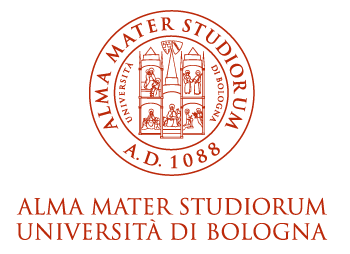
The final examination is the activity that concludes your university career and is designed to verify the achievement of the course's educational objectives.
The final examination takes place according to pre-established procedures and timetables.
Procedures are explained in the following paragraphs. In the box below you will find the calendar with each deadlines according to your degree programme.
Graduations ceremonies usually take place over several days. Graduands are notified of the exact day of graduation and the composition of the Board by an e-mail to their institutional e-mail address approximately one week in advance.
Information can be found on www.studenti.unibo.it in the details of your graduation application.
The application can be sent via the Studenti Online platform by simply selecting the “Graduation” option and following the instructions (see the attachment Student handbook to apply for graduation - only available in Italian). The online application service is available approximately 20 days before the deadline for applying.
The graduation application is submitted only once per academic year in the chosen round, within the deadlines indicated. A graduation fee (€ 32.00) is payable.
If you decide not to graduate in the chosen round, you must promptly send an email from your institutional address to the Student Administration Office (see contacts box on the right). The Student Administration Office will cancel your application. You will then be able to resubmit your application in the next round(s) of the same academic year at no extra cost.
If you submit your application for a given academic year but do not graduate in one of the scheduled rounds, you must resubmit your degree application for the following academic year by paying only a supplement of € 16.00 (virtual revenue stamp on the new degree application).
A late application for graduation is subject to an additional late fee of € 100 on top of the € 32 fee.
By the due date you must:
For graduands in CLASS, STATS&MATHS, CLAMDA, IM, GIOCA, CLAMFIM, CLAMEP, EPELM, LMAEM, LMEPP, HEMAP, CLAMED, LEIF, LEGO, QF, GRENFIN, CLAMSEI, CLAMSEI-BA and CLAMSS:
By the deadline you must upload your thesis file and any summary in English in pdf format (max 30 MB) in the detail of your application. It will not be possible to upload the pdf file after the deadline and so if you do not upload the file in time you cannot graduate in the chosen round.
Please check that the thesis title you entered on your graduation application is the same as the title in the pdf file. You can change the title of your thesis within the deadline for uploading your thesis. Remember that the title you enter will appear on your diploma.
In exceptional cases only, if you need to change the title after the deadline, please contact the Student Administration Office to request the change, or contact your supervisor who will have to make the change when validating your thesis.
The supervisor will validate your thesis within approximately one week after the upload deadline. Please check that your thesis has been approved and contact your supervisor if it has not.
Attention! Only for CLEA, CLAMM, CLEF and CLABE graduands:
In this case, you do not have to do the upload but you must send the paper in support of the final examination in pdf format to the email address below by the deadline, using only your institutional email address (name.surname@studio.unibo.it).
The pdf file must contain the title page and the full final paper.
CLEA and CLAMM: email to facecon.provafinale@unibo.it
CLEF: email to didatticascaravilli.tutorclef@unibo.it
CLABE: email to didatticasociale.tutorclabe@unibo.it
In this case, you do not need to solicit the approval of the title on StudentiOnline.
You will receive the parchment directly at the address you have chosen on www.studenti.unibo.it for the delivery of communications. Carefully check the address you entered when completing your graduation application and remember to change it if necessary.
You will also be able to find degree certificates on SOL as early as a few days after the final examination.
If you wish your parchment to be sent to an address outside of Italy, about 4 months after graduation please write an email to the Student Administration Office (segecosta@unibo.it) from your @studio.unibo.it account. In the email text you will:
Ask the Student Administration Office to post the parchment to your non-Italian address.
Indicate your (reliable) delivery address
Attach a copy of your passport.
Certificates, self certifications and Diploma Supplement:
Transcript of records (for students who haven't yet graduated), Degree certificates and self-certification forms are available for download, in Italian and in English, in the "Certificates and Self-certifications" section of your StudentiOnline profile. Please click here for more information on the certificates available, self-certification models, on how to request specific certificates, and on the Diploma Supplement.
|
Graduation Session |
Application for graduation |
All credits earned within |
Dissertation uploaded within |
Dissertation approved by supervisor within |
Publication of degree board on SOL |
|
|
Regular |
Late with fee |
|||||
|
I) July 18-21-22-23-24, 2025 |
Up to 20/05/2025 |
From 21/05/2025 to 30/05/2025 |
24/06/2025 |
03/07/2025 |
07/07/2025 |
11/07/2025 |
|
II) October 27-28-29-30-31, 2025 |
Up to 12/09/2025 |
From 15/09/2025 to 22/09/2025 |
30/09/2025 |
01/10/2025 |
15/10/2025 |
20/10/2025 |
|
III) December 17-18-19-22-23, 2025 |
Up to 16/10/2025 |
From 17/10/2025 to 24/10/2025 |
10/11/2025 |
17/11/2025 |
24/11/2025 |
10/12/2025 |
|
IV) March 23-24-25-26- 27, 2026 |
Up to 23/01/2026 |
From 26/01/2026 to 06/02/2026 |
20/02/2026 |
06/03/2026 |
13/03/2026 |
16/03/2026 |
Student handbook to apply for graduation (in Italian)
[ .pdf 1179Kb ]
How can we help you: Enrolling, changing your degree programme, transferring to and from the University of Bologna, graduating, diploma supplement and other procedures.
Address Via Marsala 49/A - 40126 Bologna BO Orario apertura al pubblico Thursday 9–12:30
Other information
Use the Virtual Help Desk to write, call, or book an appointment to submit or collect paper documents.
E-mail: segecosta@unibo.it
